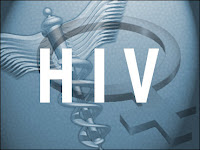
Yellow fever, malaria and cholera, previously controlled by an adequate health program, are now raging unchecked throughout these countries. "Nigeria, one of the wealthier counties under the IMF program, is also feeling the limitations imposed upon it. Nigeria has sixty percent of all doctors and nurses in black African countries, but this healthcare force has been steadily cut down since 19, until today, Nigeria is ripe for a massive outbreak of the traditional diseases which will make it easy for AIDS to spread like wild fire.
"The condom solution is being used by the IMF for the purposes of birth control, and although extensive advertising campaigns were launched to promote their use, the quality of the condoms is so poor that as much as eighty percent of them break or leak. "The AIDS virus has entered into an explosive phase in Africa, and the same condition is fast being approached by Asian countries such as India and Thailand. By the year 2000, computerized projections show that there will be close to one-hundred million cases of AIDS in Africa, with India and other parts of Asia projected as having a combined total of ninety million cases. "Projections carried out at Los Alamos indicate that there will be a total of two-hundred million cases of AIDS in underdeveloped countries by the year 2000. There is some concern beginning to surface among the team that the AIDS pandemic may not be stoppable.
With seventy-nine to eighty percent of AIDS cases occurring in Third World countries, AIDS may well already be out of hand. There is an acceleration of the epidemic which is matched by a diminishing of responses. "Almost seventy percent of all AIDS cases in Africa are among heterosexuals. The same holds true for Asia and Brazil. By the year 2000 the number of people in Asia suffering from AIDS will equal those of Africa. AIDS has become the killer of the poor, thanks to the cuts in standards of health care and lowered nutrition standards to meet IMF demands. "The latest report from WHO which is not being circulated is that governments of poor countries have given up the struggle to contain AIDS.
This applies particularly to India, where the AIDS epidemic is exploding with a virulence unmatched in Western countries. "From the point of view of senior virologists, there is no cure in sight for AIDS. The view taken by Dr. Jonas Salk that a means must be found of boosting the human immune system rather than trying to develop antibodies that can kill the AIDS virus appears to be gaining ground among those members of the medical profession who are realizing that AIDS is a created virus. "Underlining the findings of how the IMF is affecting the situation, a new threat, that of a highly virulent form of tuberculosis is now taking hold in poor countries and among the poor in the United States.… A report compiled by the CDC which is not being circulated says that the incidence of the new drugresistant strain of bacilli is now twice as high since the last study was done in 1984.
Tuberculosis has increased by twenty percent in the U.S. since 1985. Every TB patient is a target for the AIDS virus, and those with AIDS are highly susceptible to contracting tuberculosis. The ramifications are not difficult to comprehend; a twin plague of the most virulent kind is about to explode with great force in the overcrowded inner cities of America, and has already begun. "To confirm the ratio of tuberculosis to conditions of poverty, a recent study of the homeless was undertaken by a Los Alamos team.
The results bear out the "poor man's disease" label in that homeless people are forty times more likely to contract tuberculosis than those in comfortable circumstances. The conclusion drawn is that the spread of TB is accelerating at a faster rate than ever seen before, and that the outbreak of lethal epidemics are at hand." AIDS is the key to Global 2000 plans, because of its effectiveness in attacking the lungs. Imagine a searing epidemic of AIDS, followed by an epidemic of tuberculosis and then pneumonic plague, like the one that killed hundreds of thousands in Manchuria and eastern India during the period 1910-1911 and again in Europe in 1919-1921. (66 of ) When the AIDS virus becomes localized in the lungs, it is spread by respiratory discharges, such as coughing and sneezing, and in favorable climatic conditions becomes a highly contagious infectious disease.
One of the favorable conditions for the spread of AIDS is crowded dwelling space, inadequate ventilation and the weather, especially when the weather is cooler, as it is during winter in the Middle East, India and Pakistan, Malaysia and the Philippines. Pneumonic Plague would thrive in those conditions. It is not difficult to envision the rapid spread of tuberculosis in the wake of AIDS, followed by pneumonic plague throughout Africa, given the conditions so graphically described by Dr. Debret in his 1989 Paris Match interview, and spreading from Africa to India, the Philippines, Malaysia and China.
The United Nations, backed by military forces of the United States, could effectively quarantine these nations, making it difficult for anyone to escape the "cordon sanitaire" set up by the World Health Organization or some other One-World institution. Millions would be left to die. Somalia was a "test case." After a new mosquito-borne malaria that acts against the immune system was released into the population, U. N. troops were sent in to test the "cordon sanitaire." As this strategy moves forward, loans from the International Monetary Fund and the World Bank to Third World countries will increasingly require governments to enforce specific plans to diminish their populations. Contraceptives and severe penalties for families exceeding certain numbers are a part of this regimen.
McNamara will emphasize four global environmental problems created by overpopulation: the loss of bio-diversity, acid raid, the destruction of the ozone layer and changes in the climate. "All are functions of rising population levels," he has stated, "and increasing consumption per capita." Although he has always neglected to mention that the huge consumption levels that are dangerous to the environment are among the rich; not the poor. It's not the poor of the world who burn millions of gallons of petroleum flying around on private jets. It's not the poor of the world who are burning a hole in the ozone layer. It's not the poor of the world who are bulldozing the Rain Forests to create new wealth.
Try to imagine the vastness of the earth's resources burned and consumed to support the lifestyles of any one large clan of superrich like the Kennedys or Rockefellers or Sabahs of Kuwait compared to the necessities that sustain the simple lifestyle needs of the poor villages around the world. As McNamara and his team were working on their Global 2000 plan, the World Health Organization in Geneva was sending out directives to their branches, demanding "a significant increase in the number of viral vaccines without a reduction in quality or potency." The pressure will be on in the second half of the 1990's to speed up the pace at which they rid the planet of its "useless eaters."
The Catholic Church can and will use its vast resources to fight the Global 2000 plan for mass sterilization and contraception. But not even the Catholic Church would dare blame the Olympians for the deaths of tens or hundreds of millions from "natural causes." The AIDS epidemic will only be a part of that.
The Global 2000 Committee is also counting on an epidemic of tuberculosis, which has already infected more than a billion people. The new TB strain is resistant to all known methods of treatment, and the death rate from the new tuberculosis bacilli is ten times greater than from previously known types of (67 of ) the disease. This new strain may well be part of the process designed to "speed up" the death rate. But as long as the world believes that AIDS and this new strain of TB were created by nature, those deaths can only be lamented as the tragic result of "natural causes."
How many people will allow themselves to believe the truth? How many will demand an honest answer to the question: Was the AIDS virus really created in our own Chemical and Bacteriological Warfare labs? Perhaps not enough. As Dr. John Seale said: "Doubtless most people will dismiss the suggestion that the AIDS epidemic in the United States may be the result of an act of deliberate biological warfare as worthy only of a fictional plot by Ian Fleming. But it is certainly no less plausible, scientifically, than the hypothesis currently favored by molecular biologists. It may even be true, though strange, but truth is always stranger than fiction." Dr. Seale sadly concluded: "The greatest coverup of any disease in history is in progress."
The participants in the coverup, says Dr. Seale, include the editors of medical and scientific journals who "have misled their professional colleagues about the nature and severity of the AIDS epidemic…By selective acceptance or rejection of original papers and letters, and by selecting authors to write 'safe' editorials and review articles, they have perpetuated dangerous misconceptions." But he knows what his colleagues know: "Every biological scientist who has dispassionately studied the virus and the epidemic knows that the origins of the virus could lie in the development of modern biology, just as the origins of the nuclear bomb lie with modern physics.… Most who see it keep quiet, but increasing numbers are talking privately though they still lack the moral courage to speak out in public. They still hope it is a nightmare which will vanish with tomorrow's dawn." But the nightmare won't vanish with the dawn. If we pretend it will just go away, the worst is yet to come. And, as Schopenhauer, the philosopher, said, so on until the worst of all.
Source : www.web-articles.info
read more»
Read more...
























